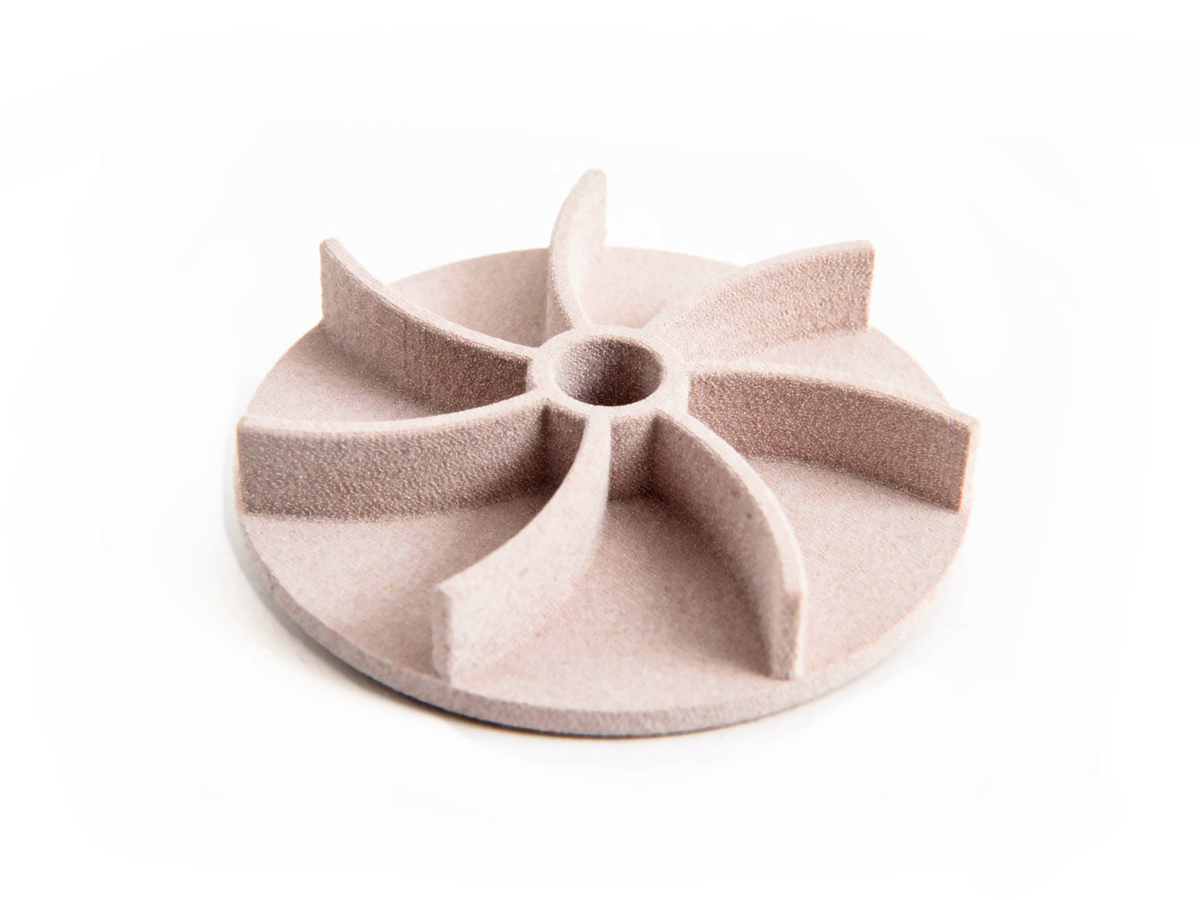Ceramic 3D Printing Prototyping for High-Precision Parts in Harsh Environments
Introduction
Ceramic prototypes fabricated through 3D printing deliver exceptional precision, thermal stability, and chemical resistance, making them ideal for high-performance applications in harsh environments. Industries such as aerospace, power generation, and medical equipment leverage advanced techniques like Binder Jetting and Vat Photopolymerization, enabling rapid prototyping with dimensional accuracy as high as ±0.1 mm.
With specialized ceramic 3D printing, designers can efficiently validate complex geometries and achieve robust functional prototypes that withstand severe operating conditions.
Ceramic Material Properties
Material Performance Comparison Table
Ceramic Material | Flexural Strength (MPa) | Compressive Strength (MPa) | Density (g/cm³) | Thermal Resistance (°C) | Applications | Advantages |
|---|---|---|---|---|---|---|
350-450 | 2000-2500 | 3.95 | 1700 | Electronics, wear-resistant parts | High hardness, electrical insulation | |
900-1200 | 2000-2400 | 6.05 | 1500 | Structural ceramics, biomedical implants | Excellent toughness, superior mechanical strength | |
500-600 | 2000-2600 | 3.10 | 1650 | Aerospace components, heat exchangers | High thermal conductivity, chemical resistance | |
700-900 | 2500-3500 | 3.25 | 1600 | Engine parts, bearings | Exceptional toughness, thermal shock resistance |
Material Selection Strategy
Choosing optimal ceramic materials for harsh-environment prototypes requires evaluating mechanical strength, thermal stability, and chemical resistance:
Alumina (Al₂O₃): Ideal for prototypes demanding high hardness (up to HV 2000) and electrical insulation, typically used in electronics and high-wear parts.
Zirconia (ZrO₂): Best for applications requiring high toughness (fracture toughness ≥10 MPa·m¹/²), suitable for biomedical implants and structural ceramics under mechanical stress.
Silicon Carbide (SiC): Recommended for prototypes needing excellent thermal conductivity (>150 W/m·K) and chemical stability, valuable in aerospace and heat exchanger components.
Silicon Nitride (Si₃N₄): Preferred for prototypes facing severe thermal shocks and mechanical loads, boasting excellent fracture toughness (~8 MPa·m¹/²) and thermal shock resistance.
3D Printing Processes for Ceramic Prototypes
3D Printing Process Comparison
3D Printing Process | Accuracy (mm) | Surface Finish (Ra µm) | Typical Uses | Advantages |
|---|---|---|---|---|
±0.1 | 6-15 | Structural prototypes, refractory components | High precision, complex geometries | |
±0.05 | 1-5 | Micro-scale parts, medical ceramics | Excellent resolution, smooth surfaces | |
±0.1 | 8-20 | Mechanical ceramics, wear-resistant parts | Durable, high mechanical performance |
3D Printing Process Selection Strategy
Choosing suitable ceramic additive manufacturing techniques involves assessing precision, surface quality, and part complexity:
Binder Jetting (ISO/ASTM 52900): Excellent for high-precision structural prototypes (±0.1 mm accuracy) with intricate designs and good dimensional stability, ideal for refractory applications.
Vat Photopolymerization (SLA, ISO/ASTM 52911-1): Optimal for highly detailed prototypes (±0.05 mm accuracy), producing superior surface finishes ideal for medical implants and micro-components.
Powder Bed Fusion (SLS, ISO/ASTM 52911-1): Suitable for robust, durable ceramic prototypes that require strong mechanical performance and complex geometries without supports.
Surface Treatments for Ceramic Prototypes
Surface Treatment Comparison
Treatment Method | Surface Roughness (Ra µm) | Chemical Resistance | Max Temp (°C) | Applications | Key Features |
|---|---|---|---|---|---|
≤0.1 | Excellent | Material limit | Optical parts, biomedical implants | Exceptional smoothness, improved performance | |
1.0-3.0 | Superior (ISO 17834) | 1800 | Aerospace components, turbine blades | High thermal insulation, improved component life | |
Glazing | 0.5-1.5 | Excellent | 1400 | Electronics insulators, consumer ceramics | Enhanced surface integrity, chemical durability |
0.8-2.5 | Good | Material limit | Structural components, ceramic bearings | Automated finishing, consistent quality |
Surface Treatment Selection Strategy
Applying the appropriate surface treatment significantly enhances ceramic prototype functionality, precision, and durability:
Polishing: Best for high-precision optical or biomedical prototypes requiring extremely smooth surfaces (Ra ≤0.1 µm).
Thermal Barrier Coatings (TBC): Ideal for prototypes used in extreme thermal environments, offering superior insulation up to 1800°C, typically for aerospace engine components.
Glazing: Suitable for electrical insulators and consumer ceramics, providing excellent chemical durability and surface smoothness.
Tumbling: Recommended for structural ceramic prototypes to achieve uniform surface finishes, improving mechanical interaction and reducing friction.
Typical Prototyping Methods
Ceramic 3D Printing: Efficiently produces precise ceramic prototypes (±0.1 mm accuracy) for complex geometries.
CNC Machining Prototyping: Achieves tight dimensional tolerances (±0.005 mm) in final prototype refinement.
Rapid Molding Prototyping: Quickly generates small production runs (±0.05 mm accuracy) for rigorous performance validation.
Quality Assurance Procedures
Dimensional Inspection (ISO 10360-2)
Density and Porosity Verification (ASTM C373)
Mechanical Strength Testing (ASTM C1161)
Thermal Resistance Evaluation (ASTM C1525)
Surface Roughness Measurement (ISO 4287)
ISO 9001 and AS9100 Compliance
Key Industry Applications
Aerospace turbine and engine components
Biomedical implants and surgical instruments
High-performance electronic insulators
Components in chemical processing environments
Related FAQs:
What makes ceramics ideal for prototyping parts in harsh environments?
Which ceramic materials are best suited for high-temperature applications?
How do surface treatments enhance ceramic prototypes?
What accuracy can ceramic 3D printing achieve?
Which industries benefit most from ceramic prototyping?

